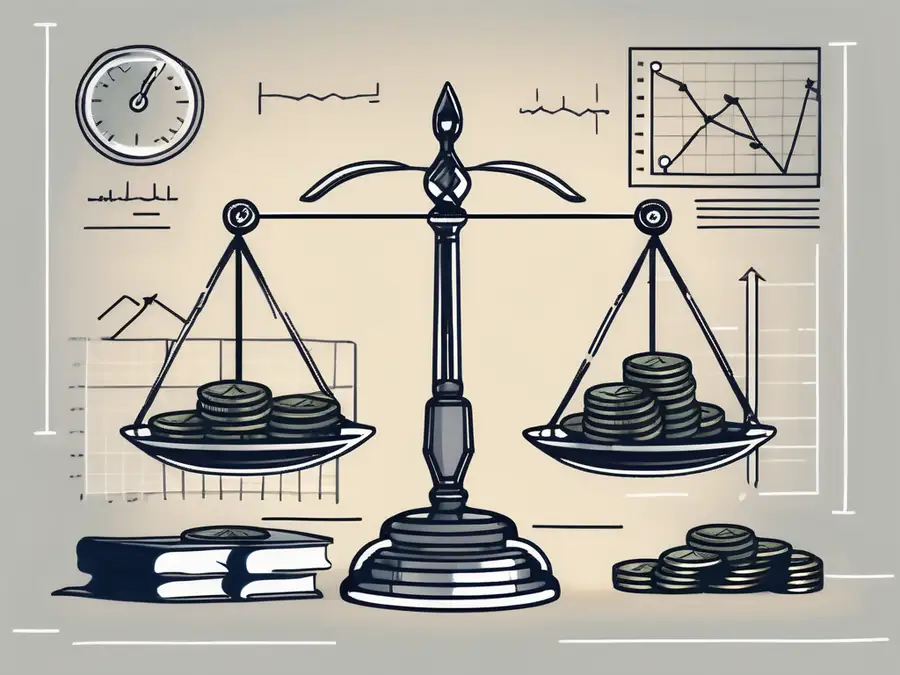Understanding the Howey Test: A Comprehensive Guide

The Howey Test is a critical legal framework used in determining whether a transaction qualifies as an investment contract. This guide aims to provide a comprehensive understanding of the Howey Test, its origin and purpose, its fundamental principles, application in securities, its relationship with cryptocurrency, and its global impact.
The Origin and Purpose of the Howey Test
The Howey Test derives its name from the landmark U.S. Supreme Court case SEC v. W.J. Howey Co. (1946). The case involved an investment scheme tied to orange groves in Florida. In this case, the Court established the test to identify investment contracts falling under the Securities Act of 1933. The purpose of the Howey Test is to protect investors from fraudulent securities offerings.
The Historical Context of the Howey Test
The 1930s witnessed a surge in fraudulent schemes, prompting the U.S. government to enact legislation aimed at safeguarding investors. The Securities Act of 1933 required companies to register securities offerings with the government, providing investors with essential information.
However, some promoters developed creative strategies to bypass these regulations, leading to the development of the Howey Test in response to evolving investment schemes.
During this time, the financial landscape was rife with unscrupulous individuals attempting to exploit unsuspecting investors. The Great Depression had left many people vulnerable and desperate for financial security. In such an environment, fraudsters took advantage of the public's desperation, concocting elaborate investment schemes that promised high returns but delivered nothing but heartbreak and financial ruin.
Recognizing the need for comprehensive regulations, the U.S. government sought to close loopholes that allowed fraudulent schemes to flourish. The Securities Act of 1933 was a crucial step in this direction, but it soon became evident that some promoters were finding ways to circumvent the law.
The Primary Objective of the Howey Test
The Howey Test seeks to determine whether a transaction qualifies as a security by assessing the economic realities involved. It focuses on the substance of the arrangement rather than the form, ensuring that investors are entitled to necessary protections even if a scheme is not labeled as a security.
By examining the investment contract's elements, the Howey Test aims to differentiate between investments subject to securities regulations and those falling outside their scope.
One of the key aspects of the Howey Test is the concept of an investment of money in a common enterprise with the expectation of profits primarily from the efforts of others. This criterion helps identify situations where individuals are essentially pooling their resources and relying on the efforts of a third party to generate returns.
Furthermore, the Howey Test takes into account the reasonable expectations of investors. It recognizes that investors often rely on the expertise and promises made by promoters, and it aims to protect them from misleading or fraudulent representations.
Overall, the Howey Test serves as a crucial tool in safeguarding investors and maintaining the integrity of the securities market. It continues to play a significant role in identifying investment contracts that fall under the purview of securities regulations, ensuring that investors are provided with the necessary information and protections to make informed decisions.
The Fundamental Principles of the Howey Test
The Howey Test comprises four fundamental principles:
The Investment of Money
An investment of money refers to the provision of funds, assets, or other consideration in return for an expectation of profits. This principle is at the core of the Howey Test, emphasizing the financial commitment made by individuals seeking returns on their investments. It underscores the idea that the contribution of capital is a key element in determining the nature of an investment.
In a Common Enterprise
A common enterprise exists when investors pool their resources or rely on the efforts of others to generate profits. This principle highlights the interconnected nature of investments, showcasing how multiple investors come together with a shared goal of earning profits. The concept of a common enterprise underscores the communal aspect of certain investment ventures, where the success of one investor is often tied to the performance of the collective group.
With an Expectation of Profits
An expectation of profits refers to the anticipation of financial gains arising from the investment. This fundamental principle delves into the mindset of investors, focusing on their outlook and objectives when committing capital. The presence of an expectation of profits distinguishes investment activities from other forms of financial transactions, as it signifies the intent to achieve monetary returns as a primary motivation.
From the Efforts of Others
The final principle explores the critical role played by promoters, sponsors, or third parties in generating profits for investors. If the success of an investment depends primarily on the efforts of others, it is likely to be classified as a security. This aspect of the Howey Test underscores the significance of external contributions and expertise in driving investment outcomes, highlighting the reliance investors place on the capabilities and actions of third parties in realizing profits.
Understanding these principles forms the basis for applying the Howey Test in different scenarios, including the realm of securities. By examining the nuances of each principle and their collective impact on investment structures, regulators and market participants can navigate the complexities of determining the securities status of various financial arrangements.
The Application of the Howey Test in Securities
The Howey Test plays a crucial role in identifying securities by determining whether an investment contract is involved. The presence of an investment contract triggers the application of securities regulations, which aim to provide transparency, disclosure, and investor protection.
The Role of the Howey Test in Identifying Securities
Applying the Howey Test involves analyzing the specific elements of an investment to assess its security status. If an investment satisfies all four principles of the test, it is likely to be classified as a security.
The Limitations and Criticisms of the Howey Test
While the Howey Test has stood the test of time and shaped the legal landscape, it also has its limitations and criticisms. Some argue that it fails to adapt to new and innovative investment models, especially in the digital realm.
Nevertheless, the Howey Test remains highly influential in securities regulation and continues to guide courts in determining whether a particular investment qualifies as a security.
The Howey Test and Cryptocurrency
As the crypto industry gained traction, regulatory bodies, investors, and businesses began grappling with its legal status. The application of the Howey Test in this context became a subject of debate and scrutiny.
The Debate Around Applying the Howey Test to ICOs
Initial Coin Offerings (ICOs) became a popular fundraising mechanism within the crypto space. The question arose whether ICO tokens should be classified as securities, subjecting them to securities regulations and the Howey Test.
Regulators have increasingly turned to the Howey Test to determine whether an ICO token meets the characteristics of an investment contract. Factors such as token utility, promoter influence, and revenue-sharing mechanisms are considered.
The Future Implications of the Howey Test on Cryptocurrency
As the crypto industry evolves, so too will the application of the Howey Test. This test will continuously shape the legal landscape and help determine the level of investor protection within the crypto ecosystem.
The Global Impact of the Howey Test
The influence of the Howey Test extends beyond the United States. Many jurisdictions around the world have adopted similar tests in their securities regulations.
The Influence of the Howey Test on International Securities Regulations
Given the global nature of securities markets, the Howey Test serves as a valuable reference point for countries developing or refining their securities regulations. Lawmakers and regulators analyze and incorporate principles from the Howey Test to ensure the effectiveness of their own legal frameworks.
The Howey Test in Various Jurisdictions
While the Howey Test has been influential internationally, jurisdictions may apply it differently. Local laws, regulations, and case precedents can modify the application of the test. Therefore, understanding the specific requirements and interpretations is crucial for compliance and legal clarity in different jurisdictions.
The Howey Test is a foundational framework in securities law, shaping the evaluation of investment contracts and their legal implications. Its impact extends to the realm of cryptocurrency and has influenced securities regulations worldwide. As an expert in the field, I strongly advise individuals, businesses, and regulators to thoroughly understand the Howey Test to ensure compliance, investor protection, and a well-regulated investment environment.
FAQs
What is the Howey Test?
The Howey Test is a legal framework used to determine whether a transaction qualifies as an investment contract, subject to securities regulations. It comprises four fundamental principles: the investment of money, a common enterprise, an expectation of profits, and profits derived from the efforts of others.
How does the Howey Test apply to cryptocurrency?
The application of the Howey Test to cryptocurrency involves analyzing whether a token or coin offered in an Initial Coin Offering (ICO) qualifies as a security. Factors such as token utility, promoter influence, and revenue-sharing mechanisms are considered.
Does the Howey Test have international significance?
Yes, the Howey Test has influenced securities regulations worldwide. Many jurisdictions have adopted similar tests or principles based on the Howey Test to determine the security status of investment contracts.
What should individuals and businesses do to comply with the Howey Test?
To ensure compliance with the Howey Test, individuals and businesses should thoroughly understand the four principles of the test and assess whether their investment or offering meets the criteria. Seeking legal advice or guidance from qualified professionals is recommended to navigate the complexities of securities regulations.
In conclusion, the Howey Test serves as a crucial tool in identifying investment contracts and determining the application of securities regulations. Its historical significance, fundamental principles, and global impact highlight its role in providing investor protection and maintaining a well-regulated investment environment.
As you navigate the complexities of investment contracts and the Howey Test, consider the innovative opportunities that Morpher provides. Embrace the future of trading with a platform that eliminates fees, offers infinite liquidity, and allows for fractional investing across diverse asset classes. With Morpher, you gain the safety and control you need, coupled with the potential to leverage your trades up to 10x. Whether you're interested in stocks, cryptocurrencies, or exploring new markets like NFTs, Morpher's blockchain-based platform is designed to democratize trading for all. Ready to transform your investing experience? Sign Up and Get Your Free Sign Up Bonus today and join the revolution with Morpher.

Disclaimer: All investments involve risk, and the past performance of a security, industry, sector, market, financial product, trading strategy, or individual’s trading does not guarantee future results or returns. Investors are fully responsible for any investment decisions they make. Such decisions should be based solely on an evaluation of their financial circumstances, investment objectives, risk tolerance, and liquidity needs. This post does not constitute investment advice.

Painless trading for everyone
Hundreds of markets all in one place - Apple, Bitcoin, Gold, Watches, NFTs, Sneakers and so much more.

Painless trading for everyone
Hundreds of markets all in one place - Apple, Bitcoin, Gold, Watches, NFTs, Sneakers and so much more.









